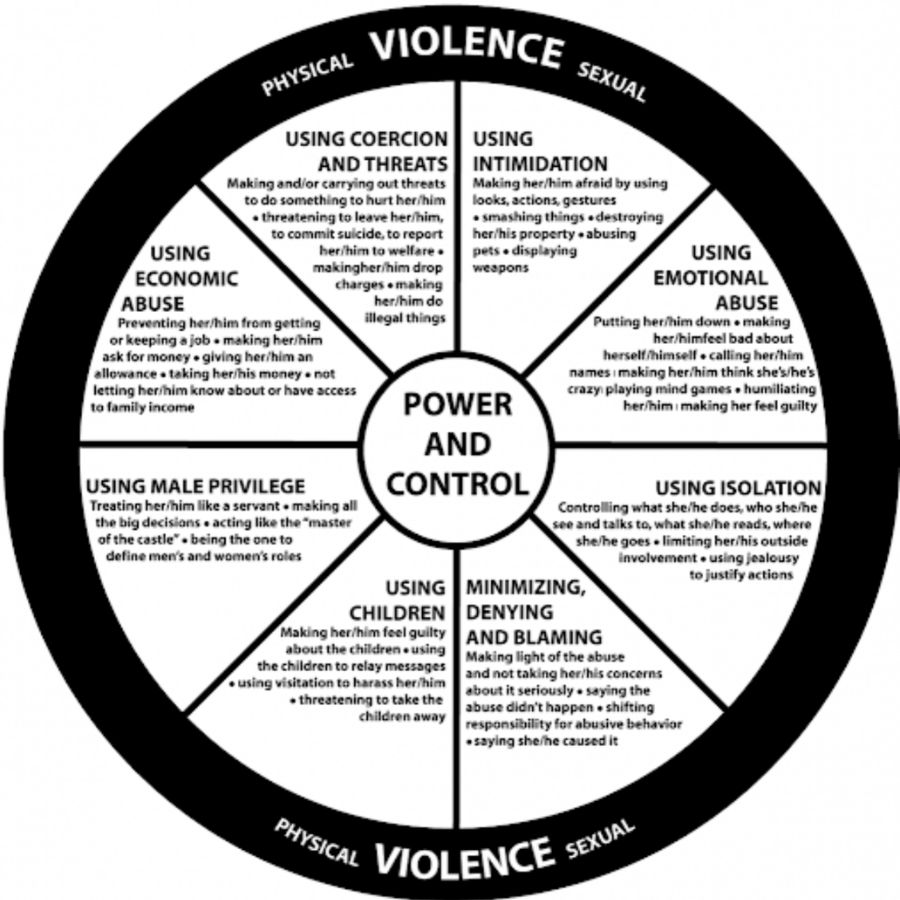Understanding Domestic Violence Dynamics
Domestic violence is a pattern of behavior designed to establish and maintain power and control over an intimate partner. While physical harm is often the most visible aspect, it is only one part of a broader set of behaviors that include emotional, psychological, financial, and social manipulation. There can be many types of behaviors that could be classified as domestic abuse, and these have been compiled into what is known as the power and control wheel.
What Is the Power and Control Wheel?
The Power and Control Wheel is a tool developed to help understand the dynamics of domestic violence. It illustrates how various tactics are employed to dominate and manipulate a partner in the relationship.
This wheel highlights the many ways an abuser can assert control, such as through coercion, threats, and isolation. These tactics often create an environment where the victim feels powerless and unable to escape the cycle of abuse. For example, the abuser might use threats of violence or harm, not just to the victim but also to children, pets, or loved ones, to instill fear and reinforce control. This is complemented by emotional abuse, which can undermine the victim’s sense of self-worth and cause them to doubt their perceptions of reality.
Additionally, economic abuse, such as controlling the finances, restricting access to money, or preventing the victim from working, further traps the victim in the relationship, making it more difficult to leave. Social isolation is another common strategy, where the abuser cuts off the victim’s contact with friends, family, and support networks, thus leaving them more dependent on the abuser.
The Power and Control Wheel also shows that sexual abuse and manipulation are often used to further degrade the victim’s autonomy and self-respect. This might not always involve overt violence but can include degrading language, forcing sexual acts, or diminishing the victim’s rights to their own body.
In essence, domestic violence is a pattern of behaviors designed to control the victim and maintain dominance. It’s a complex, insidious dynamic that extends far beyond a single violent episode. Understanding this broader context is crucial in addressing the cycle of abuse and providing support to those who are affected by it.

The Honeymoon Cycle in Domestic Abuse Cases
The power and control wheel also relates to a common cycle in abusive relationships, periods of tension build-up, an explosion or incident of violence, followed by a “honeymoon” phase where the abuser shows remorse or affection for their spouse. This cycle often repeats, which can complicate the victim’s response and testimony, especially if they are in the remorse phase with their significant other.
Why The Power and Control Wheel Matters in Domestic Violence Cases
Understanding these dynamics is important because not every case where a fight or argument has occurred is domestic violence under the law. For behavior to qualify legally as domestic abuse, it must be part of an act meant to coerce or control. This helps defense attorneys argue when a situation was situational rather than part of a controlling pattern. Many people are wrongly accused of domestic violence when it is simply a one-time heat of the moment argument that may have got out of control.
If you have been charged with domestic abuse, it is important to reach out to an experienced domestic violence lawyer near you. They will be able to get a full picture of what has occurred and do all they can to make sure your side of the situation is accurately represented and that your rights are protected. Contact the Law Office of Rodemer | Kane today for a free case consultation. 719-437-7532

